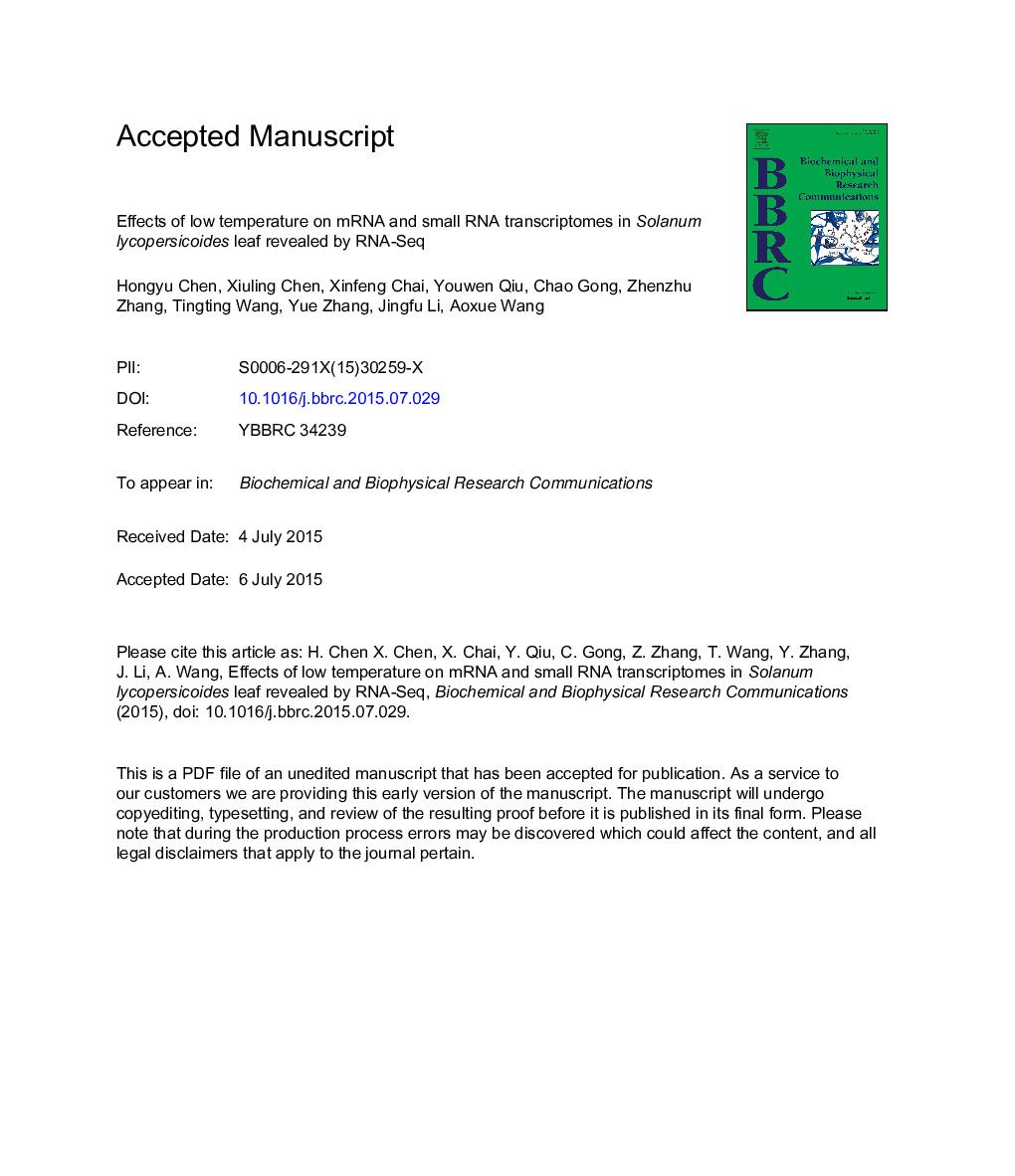| Article ID | Journal | Published Year | Pages | File Type |
|---|---|---|---|---|
| 10750443 | Biochemical and Biophysical Research Communications | 2015 | 35 Pages |
Abstract
The plant low temperature tolerance mechanisms have been studied in the Arabidopsis, tomato, Solanum commersonii, Solanum tuberosum, Chorispora bungeana, and Chinese cabbage at the transcriptional level. Some genome-wide works to identify cold-regulated genes, but no comprehensive research of the Solanum lycopersicoides transcriptome under low temperature stress have been performed. S. lycopersicoides is more freeze-tolerant than the cultivated tomato. We analyzed the low temperature transcriptomes and small RNA fractions of S. lycopersicoides leaf tissue using an Illumina platform for high-throughput RNA sequencing (RNA-seq). There were 59,286 unigenes obtained using de novo assembly, and 2052 down-regulated and 2409 up-regulated unigenes were identified in response to chilling. The expression of six cold-regulated genes was confirmed by qPCR. Some biological processes were showed, by gene ontology term enrichment analysis of the cold-regulated genes, including 'response to stimulus', 'signaling', and 'cell killing' in the response of S. lycopersicoides to chilling. In addition, we identified a total of 952 novel miRNA candidates that may regulate relevant target genes. Our data indicated that certain miRNAs (e.g., sly-miR156a, sly-miR397, and unconservative_SL2.50ch00_21686) play roles in response to low temperature stress. Sequencing of mRNAs and miRNAs revealed new genes and allowed us to have new assumptions for a low temperature tolerance mechanism.
Keywords
Related Topics
Life Sciences
Biochemistry, Genetics and Molecular Biology
Biochemistry
Authors
Hongyu Chen, Xiuling Chen, Xinfeng Chai, Youwen Qiu, Chao Gong, Zhenzhu Zhang, Tingting Wang, Yue Zhang, Jingfu Li, Aoxue Wang,
